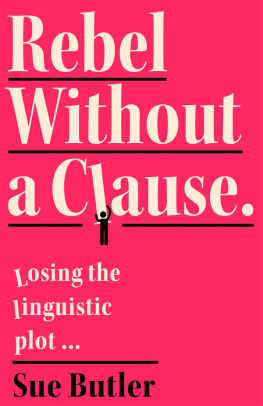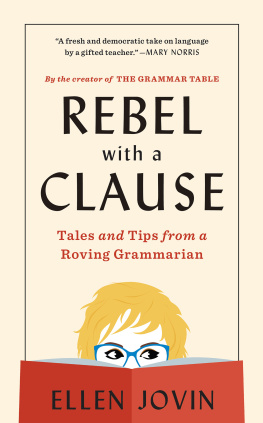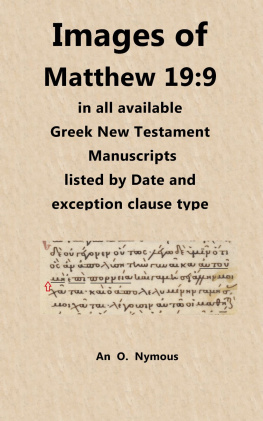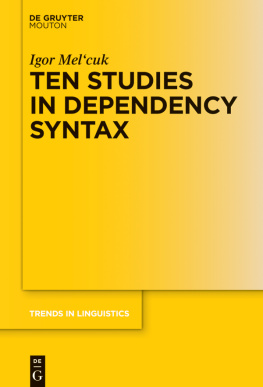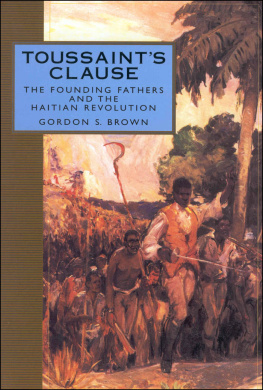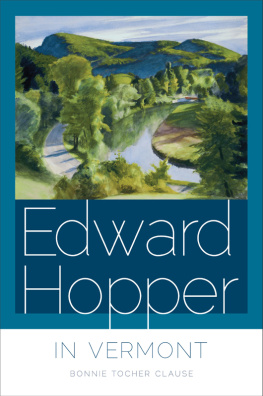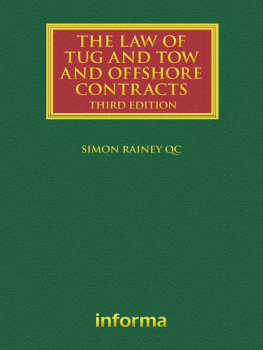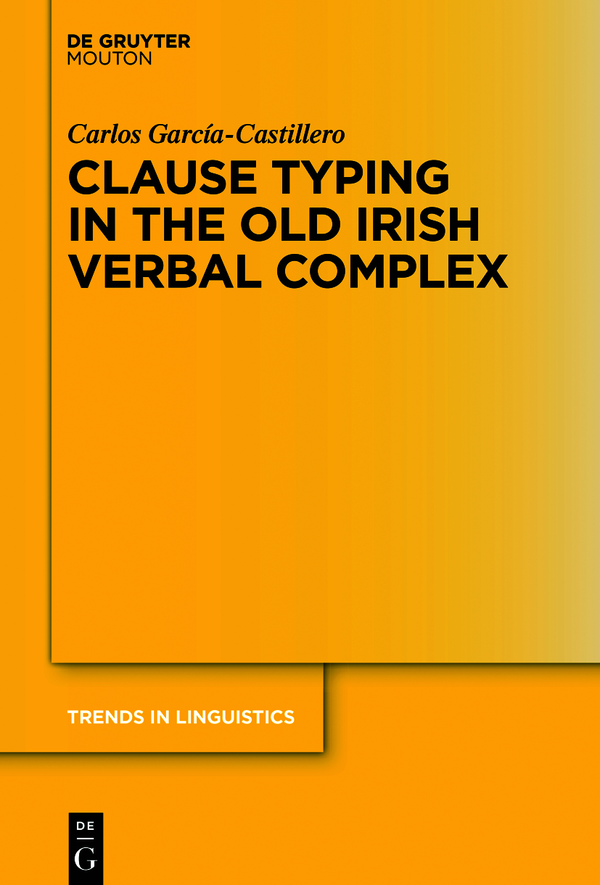Trends in Linguistics. Studies and Monographs [TiLSM]
Edited by
Walter Bisang
Chiara Gianollo
Niina Ning Zhang
Amir Zeldes
Daniel Van Olmen
Tine Breban
Volker Gast
Hans Henrich Hock
Karen Lahousse
Natalia Levshina
Caterina Mauri
Heiko Narrog
Salvador Pons
Volume
ISBN 9783110680300
e-ISBN (PDF) 9783110680324
e-ISBN (EPUB) 9783110680409
Bibliographic information published by the Deutsche Nationalbibliothek
The Deutsche Nationalbibliothek lists this publication in the Deutsche Nationalbibliografie; detailed bibliographic data are available on the Internet at http://dnb.dnb.de.
2020 Walter de Gruyter GmbH, Berlin/Boston
Part I: Preliminary chapters
Old Irish and the notion of clause typing
1.1 Aims of the chapter
This chapter has two main aims. On the one hand, it introduces the reader, especially the non-Celticist one, to the main points of the chronology, attestation and basic linguistic features of the Old Irish language. In this sense, this chapter will defend the idea that it is possible to make reliable descriptive observations and, correspondingly, to put forward significant hypotheses about Old Irish morphological, syntactic and pragmatic phenomena. On the other hand, this chapter introduces the notion of clause typing as the grammatical category morphologically expressed in the Old Irish verbal complex that will be considered systematically in this study.
In order to accomplish the first main task of the chapter, describes the ways in which the verbal complex will be represented in this study.
The second main aim of this chapter is addressed in summarizes the main findings of the chapter.
1.2 Old Irish as a Medieval West European Celtic language
The term Old Irish refers to the period between the 7th and the 9th centuries AD in the historical development of this Celtic language spoken in Ireland. Old Irish represents the earliest stage of a Celtic language in which we have a fairly complete image of the linguistic system, especially in the fields of verbal morphology constitute the basic reference nowadays for this Irish linguistic material.
Irish, along with Scots Gaelic and Manx, is classified as a member of the Goidelic group of the Insular Celtic language family. The other Insular Celtic group, the Brittonic (or Brythonic) group, includes Welsh, Cornish (already extinct), as well as the Breton language spoken on the Continent, which is the outcome of a relatively late migration from Britain. The oldest witness of Brittonic, Old Welsh, attested from the 8th to the 12th centuries, is known only in some glosses, proper names and a few continuous texts. This is why Middle Welsh (12th-14th centuries) most often constitutes the main reference in the study of the Brittonic branch of the Celtic languages. For this chronology, see Jackson (1953: 56).
Continental Celtic is the other main group of Celtic, which belongs to the Indo-European linguistic family. Continental Celtic is known at an earlier date than Insular Celtic in epigraphic sources found in the Iberian Peninsula (Celtiberian), Gaul (Gaulish), and Northern Italy (Lepontic and Gaulish). Some Lepontic texts are considerably old, attested in the 6th century BC, and the most recent ones date from the 1st century BC. Gaulish is first dated in the 3rd century BC and it survived until the Christian age; as in the case of Celtiberian, dated between the 2nd and 1st centuries BC, it is not clear when it went out of use. The Continental Celtic languages were written down in varieties of both the Latin and Greek alphabets, and also in graphical systems perhaps originally derived, but in the end different, from the former. The Continental Celtic languages have a fragmentary attestation, that is to say, their lexicon, syntax, morphology and even phonology is only partially known. The obvious consequence of this fragmentary character is that the most important texts in Continental Celtic are intelligible only to a limited extent. Frequently, their general sense can be ascertained with some confidence, but the exact meaning of many words, sometimes even their segmentation, remains unclear.
In Medieval Western Europe, the emergence of the vernacular literary traditions in most of the non-Romance languages such as Irish predate those of their Romance counterparts, but this still happened later than in the case of Eastern European languages such as Gothic or Armenian, which are known since (or, in the case of the Gothic language, in) the 4th century A.D. The reason for the differing dates of attestation is to be sought in the various manners in which the Christian religion and its basic text, the Bible, were made known and spread in several parts of Europe and, as a secondary but related factor, in the specific character of the language used in this process of Christianization. Thus, whereas the Bible received a kind of canonical translation into the vernacular language in the Eastern part of the ancient Roman Empire, that is to say, in Byzantium, which brought about the Gothic and Armenian translations from basically Greek originals of the Bible, a comparable enterprise with the Latin version of the Bible was more problematical in Western Europe. Certainly, as van Liere (2014: 190) points out, [t]here is no evidence of any prohibition in the Early Middle Ages against Bible translation in the vernacular, but van Liere (2014: 178) himself recognizes that the authoritative Bible remained the Vulgate text, the primacy of which was beyond doubt.
The practical consequence of the previous situation for Christian(ized) Western Europe in Late Antiquity and the Early Middle Ages is that knowledge of the Latin language became indispensable for everyone interested in religious and, more generally, intellectual matters. In addition to the primary role played by the Biblical text, the Roman classical literary tradition was of paramount importance in the cultural environment of Western Europe, at least for merely instrumental reasons, since the Latin linguistic model followed even in the Biblical text was precisely that of the canonical Roman authors who were active in the Late Republic and Early Empire.
The rise of the literary tradition, and even the first texts of vernaculars in Medieval Western Europe are therefore inextricably bound with a cultural milieu in which the Latin language and texts occupied the central place of intellectual activity. In this regard, however, there were some differences between countries in which languages derived from Latin were spoken and those countries with a language of a different origin. In the Early Medieval period, it is difficult to differentiate between Romance proper and various varieties of (Vulgar) Latin since there was a considerable amount of interference and mutual influence between these linguistic systems. By contrast, such an influence was not possible in countries with languages such as Irish or Anglo-Saxon, which were clearly different from Latin and exerted no interference in the knowledge of this classical language. This is why, as a part of the political measures that ultimately brought about the so-called Carolingian Renaissance, which aimed at a generalized good command of the Latin language by the intellectual and administrative heads of the Roman-Germanic Empire led by Charlemagne (died in 814 AD at the age of approximately 60 years), Irish and English scholars were brought to the Continent to teach Latin, among other duties. To a great extent, the fact that the most important Old Irish texts are included in manuscripts preserved in monastic or ecclesiastic libraries on the Continent is the consequence of this historical circumstance.


